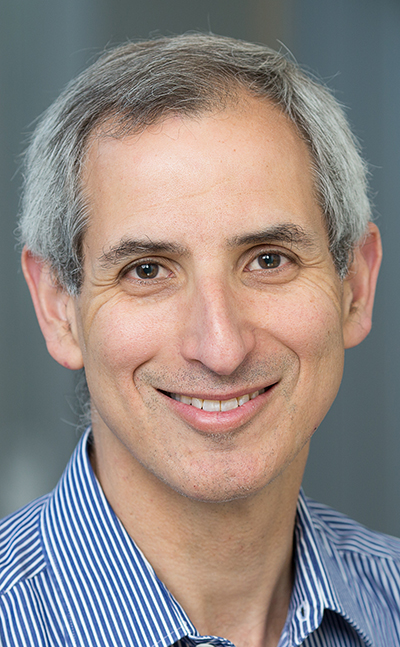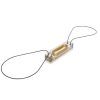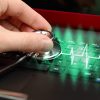For a medical professional like me, immersed in the field of electrophysiology, it’s all about staying connected. Making sure the heart’s electrical system keeps the heart pumping regularly, in a steady pattern and at the right rate for the work it’s doing, requires both a view of how the heart is beating now and an outlook to what may happen in the future.
Typically, an adult’s resting heart beats between 60 and 100 times per minute. A heart rate that’s too fast, too slow or irregular can make a life-or-death difference.
Yet millions of Americans with heart rhythm problems are leading full and satisfying lives, thanks to a variety of cardiac implanted devices—even in the midst of a global pandemic. That’s because today’s cardiac devices are supported by advanced remote monitors.
These remote cardiac device monitors have been a game changer during the COVID-19 pandemic, redefining how patients with devices interact with their care providers. By recording timely device and physiologic data—and sending that data securely over the Internet to a patient’s healthcare team—countless patients have been able to stay out of the ER, avoid in-person clinic visits and reduce exposure to the novel coronavirus.
The ability to monitor cardiac devices remotely has given peace of mind to patients in an already stressful time. And it’s helped care providers free up more hospital beds, while also reducing the need for costly, and sometimes scarce, protective equipment.
Adopting Innovations in Microelectronics and Data Transmission Technology
Pacemakers, defibrillators and other implantable cardiac devices manage, monitor—and even disrupt—a range of cardiac conditions, including bradycardia (a slow heartbeat), atrial fibrillation (an irregular heartbeat) and sudden cardiac arrest to progressive heart failure.
These remarkable cardiac devices—along with their remote monitoring systems—have evolved rapidly, incorporating technology advances in microelectronic circuitry, data transmission and user experience design.
While early devices required office visits and cumbersome programming for any interaction, by the late 1990s, medical device engineers were harnessing developments in system architecture, software design and human factors to develop a secure back-end system for protected health information and clinician-facing websites—as well as stand-alone hardware systems for patients’ homes.
And by 2002, the introduction of the first Internet-based patient management system forever changed the way heart device patients were managed and monitored. By providing physicians with detailed information on their patients’ cardiac function, these wireless and Internet-based remote monitoring systems eliminated the need for frequent office visits.
The promising changes in cardiac devices made their way to diagnostics as well. For many years, the only “portable” diagnostic option for patients with heart rhythm irregularities was to wear a Holter monitor.
Essentially a portable electrocardiogram, the Holter monitor allowed doctors to continuously measure and record patients’ heart activity outside the office—but it required patients to be externally wired to the monitor, with patches that attached on the skin’s surface.
While Holter monitors and their cousins (event monitors and mobile telemetry) are still an option, the advances in cardiac electronic devices were applied to the diagnostics in the form of the insertable cardiac monitor (ICM): A small device that samples the heartbeat under the skin. Continuous improvements over the years made ICMs smarter, lighter and more connected.
ICMs evolved by leveraging a sophisticated and accurate atrial fibrillation detection algorithm, deep miniaturization and links to a mobile management and monitoring service.
Bluetooth Technology and Smartphone Apps
Today, heart device patients are experiencing newfound freedoms that help them get on with their lives.
Rather than forcing patients to adapt to their technology, manufacturers and developers are creating solutions that are responsive and agile, meeting patients on the digital platforms they use daily.
After four decades of relying on proprietary telemetry for these devices, today’s models use an open communication platform to prioritize the patient experience. New remote monitoring devices feature Bluetooth low-energy technology and smartphone apps instead of standalone in-home hardware at the bedside.
In fact, the person you see casually “checking their phone” may actually be monitoring their pacemaker or defibrillator, and sending the information to their doctor.
Today patients can use their own smart technology to send device data to their clinic from almost anywhere in the world—as long as there is a Wi-Fi or cellular connection. End-to-end security with data encryption keeps the data protected.
Drawing on New Data Streams for the Future
We’ve also moved beyond just collecting data from the device. Now we can leverage that data to adjust the operational parameters of the medical device itself, remotely adjusting or reprograming an insertable cardiac monitor for more precise and personalized patient care.
Going forward, I believe we will see monitoring apps become even more commonplace, potentially linking to patients’ other communication devices and integrating diagnostic and cardiac monitoring data, along with the patient’s other health data.
I anticipate cardiac device remote monitoring systems will become increasingly intuitive and convenient, delivering the right kind of data in the right way, at the right time and to the right user.
Gaining Insights for the Future
Remote monitoring technologies in every form, including wearable technologies, sensors and new smartphone apps, are proliferating. These technologies show great promise for monitoring, diagnosing and treating many health conditions, from asthma to diabetes and even to COVID-19.
In fact, the CDC recently announced its plans to create a smartphone app to survey daily reports of side effects from COVID-19 vaccines, once they are approved for widespread use.
As the ability to continuously monitor, collect and analyze patient health data from outside the clinic evolves, it will shape the future of healthcare delivery—and our approach to clinical research. A prime example is the rapid adoption of software medical platforms like Apple’s ResearchKit, which now facilitates the recruitment of participants for many clinical studies and trials.
Similarly, for the cardiac device population, we are gaining important insights from our ongoing analyses of large diagnostic data pools—data drawn from device registries that can improve care. A growing body of evidence shows that today’s remote monitoring devices constitute a safe and effective addition to the treatment strategy for many kinds of cardiac patients, across their health journey.
I’m confident that richer, more precise and more personalized data will continue to improve our ability to predict—and prevent—many more heart problems. And for millions of people around the world, that’s a heartening outlook for the future.







